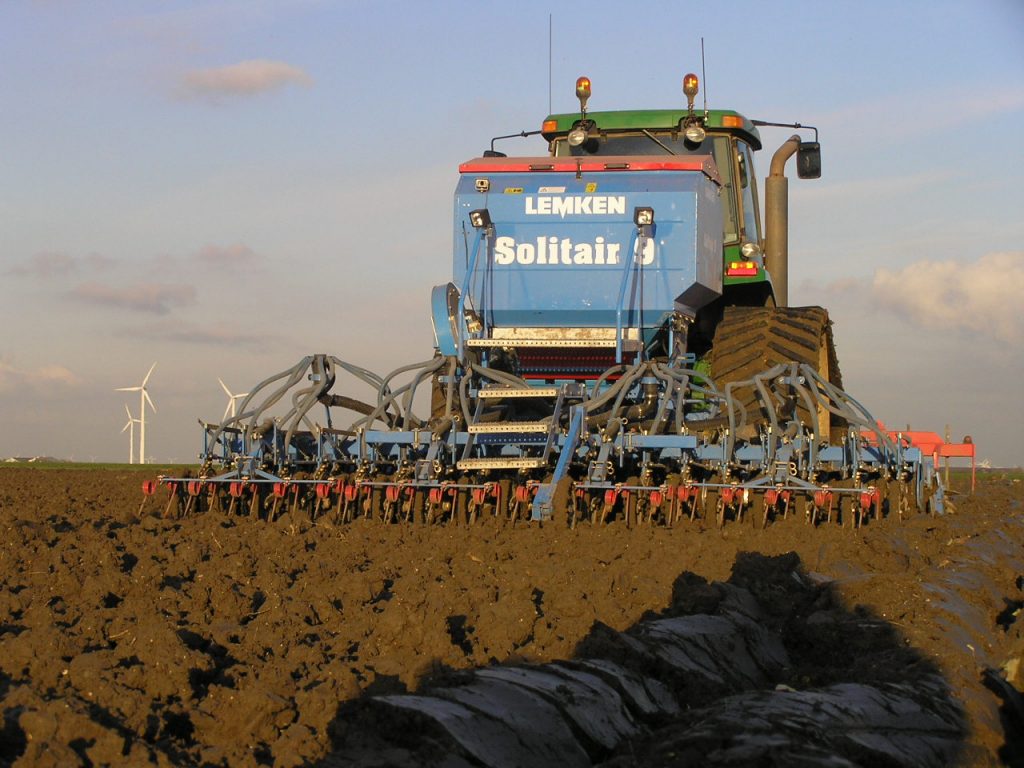Resist the temptation to rush spring barley drilling
19th March 2018
Sowing spring barley into wet, cold soils will limit yield potential from the outset, so it is far better to wait for conditions to improve, leading agronomy firm Hutchinsons says.
Sowing spring barley into wet, cold soils will limit yield potential from the outset, so it is far better to wait for conditions to improve, leading agronomy firm Hutchinsons says.
After the wintry start to March many growers are eager to get on with spring drilling, but seed drilled into cold, wet soils will expend a lot of its energy just on survival and germination, potentially reducing the vigour of early growth, says Shropshire-based agronomist Ed Brown.
“Barley produces a set number of grains per ear and doesn’t have the ability to compensate for poor tillering later in the season like wheat does, so it’s crucial you do everything to maximise establishment and allow plants to produce as many ears as possible.”

Ed Brown.
Soil temperatures should be at least 6C and rising for good germination and if a return to cold, wet weather is forecast it may be worth holding off drilling, he suggests.
“Soils in this area are predominantly a lighter and sandier base that will dry out and warm up quickly. For example, the return to milder weather after the cold spell earlier this month saw temperatures rise from 0.5C to 4C in the space of a week, so there’s no need to rush in.”
It is preferable to minimise soil disturbance prior to drilling, but where deeper cultivations are necessary, allow time for soils to dry sufficiently to create a good seedbed, Mr Brown says.
Cover crops have done an excellent job of conditioning soils and drying ground out this season, he notes. “Oats, vetch and linseed is the main mix used for soil protection and organic matter addition. Most have been sprayed off by now and are drying out nicely, leaving soils in great condition for drilling.”
Mr Brown suggests seed rates for feed and malting barley are often too low for fear of increasing lodging, but insists this risk can be fairly easily controlled with agronomy. “Lodging is manageable, but if you haven’t got the plant numbers in the first place, yield potential will already be limited.”
“Generally a seed rate of 160kg/ha should be the minimum, with higher rates used where there is reason to, such as on tricky soils or where establishment is likely to be compromised.”
Boost early growth
Early nutrition is key to getting barley off to a good start and maximising tiller numbers, with nitrogen and phosphate of particular importance. Manganese is also worth including on lighter soils.
Mr Brown recommends applying the bulk of nitrogen to the seedbed and where high rates are required, a top-up should be applied by the three leaf stage.
He has seen good results from applying the foliar zinc-based nutrient product Advance 66 and believes it is a worthwhile addition to nutrient strategies. The product contains the key nutrients of nitrogen, phosphoric acid and soluble potash, and can stimulate early root development.
Controlling spring-emerging weeds to minimise their competition with the crop is another important element of barley establishment, Mr Brown says. “If you’ve got weeds germinating with the barley crop you’ve got to knock them out early before they reduce yield potential.
“Pre-emergence herbicide options are fairly limited in spring barley, and if you only have broadleaf weeds to deal with, a single well timed post emergence spray is often all that is needed.”
If grass weeds are the issue then the focus should have been on dealing with these post harvest and through the autumn/ winter via surface cultivations followed by a glyphosate application to remove flushes of brome/ryegrass/black-grass, he says.

